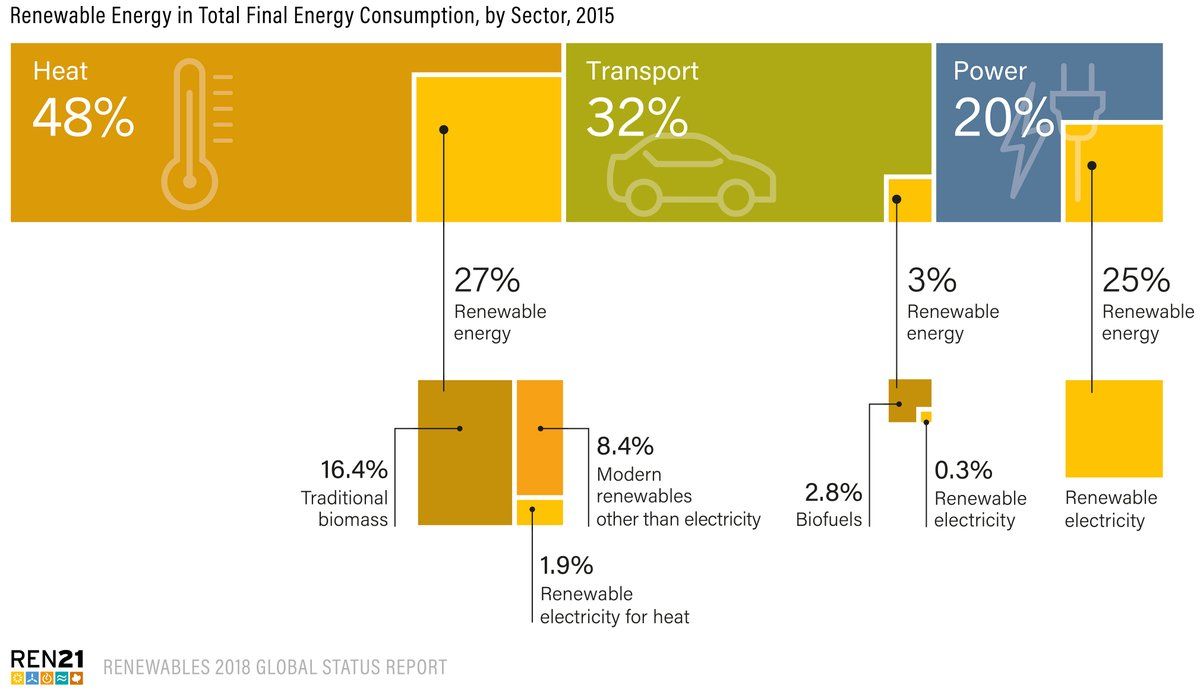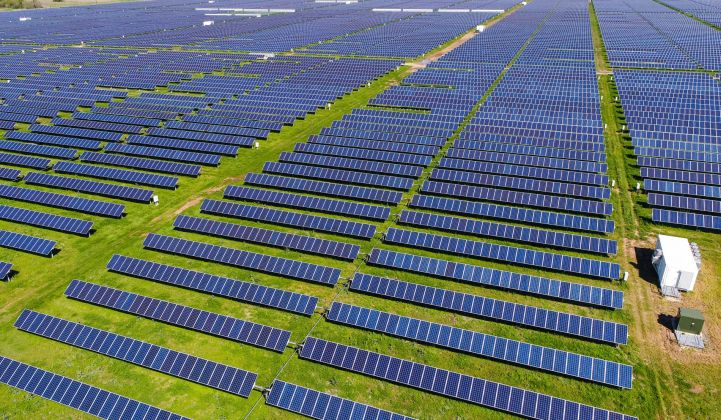Renewable energy once again achieved record increases in capacity in 2017, according to a report out Monday from the Renewable Energy Policy Network of the 21st Century (REN21), a policy organization with members across national governments, industry and divisions of the United Nations.
The power sector, and specifically solar PV, led the results with 9 percent growth in overall generating capacity — 55 percent of which came from new solar. But other energy-consuming sectors such as heating, cooling and transportation saw marginal if any gains in clean energy uptake. And for the first time in four years the decoupling of emissions and economic growth faltered, with energy-related carbon dioxide emissions growing by an estimated 1.4 percent.
“We see a very positive uptake of renewable energy in the power sector, which is really an indication that, in principle, the energy transition is possible,” said Rana Adib, executive secretary of REN21. “This said, the big challenge we have in the overall energy transition is that renewable energy for power only represents 20 percent of final energy demand.”
Heating and cooling accounts for almost half of total global energy consumption. Transport accounts for almost one-third. In both those sectors, penetration of renewable energy is low: just 3.1 percent in transport in 2017 and 10.3 percent for heating in 2015.

Even as those sectors temper results, though, Adib said the power sector is reaching a “second tipping point” in some areas, where renewable energy is not only more economic than new fossil fuel construction, but also existing fossil fuel plants.
In 2017, the world added 98 gigawatts of solar PV capacity — more than fossil fuels and nuclear capacity together. That’s an increase of about 29 percent compared to 2016, which was also a record-breaking year.
Those records are especially noteworthy given the policy uncertainty in the United States. While growth was somewhat depressed in the U.S., China ran away with the strongest rate of expansion. REN21 notes that although more and more governments and corporations are relying on solar power, most global demand is still tied to policy.
Offshore wind also had a record-breaking year, growing capacity by 30 percent even though the industry at large lagged behind solar with 52 gigawatts of added capacity.
China continues to dominate in clean energy
Overall investment grew modestly last year to a total of $279.8 billion compared to $274 billion in 2016. Once again that was led by what REN21 categorizes as “developing and emerging economies,” which grew their investments by 20 percent to $177 billion, compared to money from developed countries, which fell 19 percent and added up to $103 billion.
Much of the investment in the developing and emerging category was led by China, which, it’s safe to say, is neither developing nor emerging when it comes to clean energy. China’s dominance and aggressive clean energy growth is a theme threaded throughout the report. The country accounted for a record 45 percent of global investment last year, up 10 percent from 2016.
Adib said China is investing in a holistic approach toward renewables by paying for the infrastructure that allows clean energy to integrate into the grid, and setting up incentives for high energy-consuming industries to locate facilities in regions with proximate clean energy.
She also said the country is pushing the pack on transportation electrification. Though electric vehicles still account for a miniscule portion of light-duty car sales globally, at 1 percent, China is the world’s largest market.
The United States, on the other hand, is lagging. It’s true that the Trump administration’s solar tariffs had less of an industry-halting impact than a chilling one, but on most barometers of clean energy progress, “They’re ripping us left and right,” as President Trump would say.
While China’s investment grew, U.S. spending fell 6 percent. The $40.5 billion accounted for 14 percent of the global total, making it “a distant third” to China. Europe accounted for 15 percent of investment.
China now has over 3 million jobs in solar. The U.S. has just over 230,000 according to REN21, although the Solar Foundation's latest job census put that number closer to 250,000.
The U.S. still came in second to China on total renewable power capacity, but its 161 gigawatts of capacity is less than half of China’s 334 gigawatts. In 2017, China added more solar capacity than the entire world added in 2015. According to GTM Research, China's demand is driving global growth.
 Source: REN21
Source: REN21
Non-governmental actors take the lead
Adib said it’s not all negative for the U.S. Much like in the rest of the world, bodies aside from national governments are increasing their focus on clean energy.
“In the U.S., the positive thing is we see new players stepping up even though the national government is quite critical of renewable energy,” said Adib. “The fact that new players, like corporations and subnational governments, are stepping in is quite a good sign.”
This progress should be placed in context, though. Non-governmental actors represent a small portion of overall energy consumption. Adib said “there is no way that we will reach Paris goals or the sustainability development goals” if countries don’t make advancements on electrifying sectors aside from power generation.




